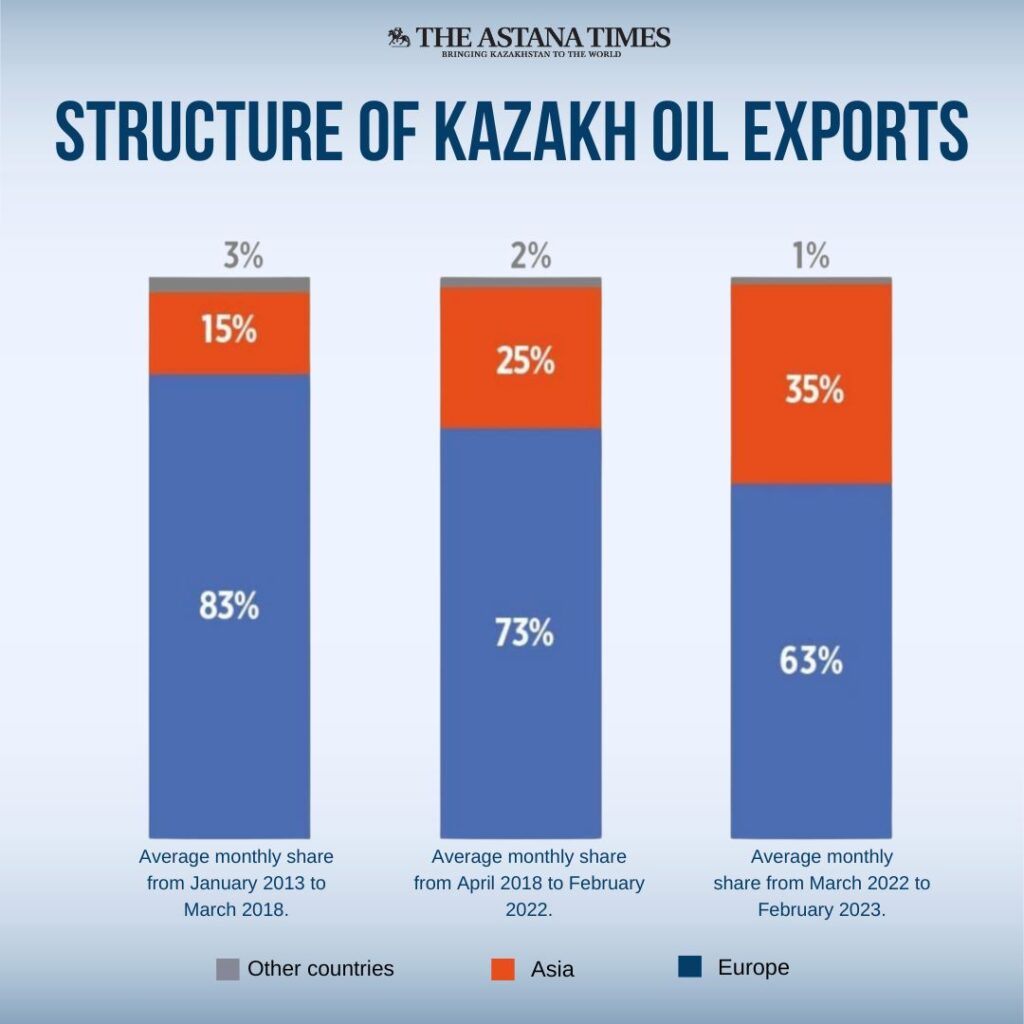Kazakhstan exports roughly 4.5-6 million tons of oil every month, with the European Union (EU) remaining the key buyer. Yet, the demand for Kazakhstan’s oil is also growing in Asian markets, said Economic Research Institute (ERI) expert Yernar Serik.
The country’s oil exports have increased to Asian countries, especially China, India, South Korea, and Türkiye, according to him.
Serik told The Astana Times that the average monthly share of the European countries went down from 83 percent in March 2018 to 73 percent in February 2022.
“But, overall, I cannot say that the EU countries have reduced their oil imports from Kazakhstan. For example, Germany, the largest importer of Kazakh oil, bought 86.3 million tons last year for $62.5 billion, which is almost 7 million tons more than in 2021. The Netherlands, as the second largest importer, increased its purchases from 68 to 96.9 million tons, while France purchased between 36.3 to 43.6 million tons,” Serik said.
The ERI expert notes that the Russia-Ukraine conflict only accelerated Asian diversification of Kazakh oil exports.
He said European countries’ average monthly oil import share reached 63 percent between March 2022 and February 2023, while 35 percent of Kazakh oil goes to Asia.
However, it is too soon to say that Kazakhstan is already dominating oil exports to Asian markets.
Despite a significant portion of the world’s oil exports going to Asian countries (around 58 percent or $600-$650 billion annually), according to Serik, Kazakhstan’s share is yet to reach a sizable percentage, indicating that there is room for growth. He noted, however, that the country faces logistical challenges.

“Kazakhstan increased its Asian supplies to $16.6 billion in 2022 or 35 percent of Kazakhstan’s exported oil. This means that our share of Asian oil imports does not even exceed 3 percent. Therefore, I think Kazakhstan has excellent prospects for increasing oil supplies. The crucial component is to have enough logistical pipeline capacity, which may be a problem,” he said.
Не pointed out that the diversification of oil exports is inextricably linked to infrastructure and the variety of export routes.
Last year, President Kassym-Jomart Tokayev called for diversifying oil export routes to ensure safe and uninterrupted export of domestic products amid the disruption in logistics due to the geopolitical situation and the sanctions, saying that the “Trans-Caspian route is a priority.”
The Trans-Caspian International Transport Route (TITR), also known as the Middle Corridor, is an international corridor that starts from Southeast Asia and China and runs through Kazakhstan, the Caspian Sea, Azerbaijan, Georgia, and further to European countries.
So far, the country’s efforts to promote the Middle Corridor enabled Kazakhstan to halve the cargo transit time from 12 to 6 days.
The TITR also attracts vested interest from the EU and China. Last year, it was announced that the EU intends to invest in developing the TITR, while China also expressed its interest in developing international transportation links across Kazakhstan’s territory.
During Chinese President Xi Jinping’s official visit to Kazakhstan in September last year, the two governments signed a memorandum of understanding to expand cooperation in coordinating rail traffic along the China-Europe and TITR routes.
President Tokayev and President of Azerbaijan Ilham Aliyev agreed this week to continue implementing a roadmap to develop the Middle Corridor, citing in the official communique that further cooperation between the region’s countries to address transport and transit sphere is in the common interest. The Middle Corridor was identified among the priorities of national transport strategies for both countries.

